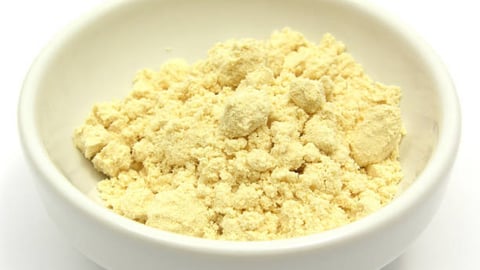The Importance of prostacyclin and prostaglandin in Human Physiology

Prostacyclin and prostaglandin are two essential substances found in the human body that play crucial roles in various physiological processes. These lipid compounds are derived from essential fatty acids and are involved in numerous biological functions, including inflammation, blood clotting, and the regulation of blood pressure. Understanding the roles and functions of prostacyclin and prostaglandin is crucial for comprehending the intricate workings of human physiology. In this article, we will delve into the various aspects of prostacyclin and prostaglandin and their significance in maintaining homeostasis within the body.
The Basics: What are Prostacyclin and Prostaglandin?
Prostacyclin, also known as prostaglandin I2 (PGI2), is a potent vasodilator and inhibitor of platelet aggregation. It is produced by endothelial cells, mainly in the blood vessels and lungs. Prostacyclin plays a pivotal role in preventing the formation of blood clots and maintaining normal blood flow. On the other hand, prostaglandins are a group of lipid compounds that are derived from arachidonic acid. They are synthesized in almost all tissues and act as local hormones, exerting a wide range of effects on various physiological processes.

The Role of Prostacyclin in Cardiovascular Health
Prostacyclin plays a crucial role in maintaining cardiovascular health by regulating blood pressure and preventing the formation of blood clots. It acts as a vasodilator, relaxing the smooth muscles in the walls of blood vessels, which leads to the widening of the vessels. This vasodilatory effect helps lower blood pressure and allows for better blood flow to different organs and tissues, ensuring their optimal functioning. Additionally, prostacyclin inhibits the aggregation of platelets, preventing the formation of blood clots that could potentially lead to heart attacks or strokes.
The Impact of Prostaglandins on Inflammation and Pain
Prostaglandins are crucial mediators of inflammation and pain in the body. When tissues are injured or infected, prostaglandins are produced and released, leading to the characteristic symptoms of inflammation, such as redness, swelling, and pain. Prostaglandins sensitize nerve endings to pain, making the affected area more sensitive to stimuli. They also contribute to the dilation of blood vessels, increasing blood flow to the injured site, which aids in the delivery of immune cells and nutrients necessary for tissue repair. Non-steroidal anti-inflammatory drugs (NSAIDs) work by inhibiting the production of prostaglandins, thereby reducing inflammation and alleviating pain.

Prostacyclin and Prostaglandin in Reproductive Health
Prostacyclin and prostaglandins play important roles in reproductive health, particularly in the female reproductive system. Prostaglandins are involved in the contraction of the uterus during menstruation and childbirth. They promote the shedding of the uterine lining during menstruation and stimulate uterine contractions during labor. Prostacyclin, on the other hand, helps maintain the patency of the blood vessels in the placenta, ensuring adequate blood flow to the developing fetus. Imbalances in prostacyclin and prostaglandin levels can contribute to menstrual irregularities and complications during pregnancy.
The Connection between Prostacyclin, Prostaglandin, and Asthma
Asthma is a chronic respiratory condition characterized by airway inflammation and constriction. Prostaglandins, particularly the type known as leukotrienes, play a significant role in the pathogenesis of asthma. Leukotrienes are produced by immune cells in the airways and contribute to airway constriction, mucus production, and inflammation. In contrast, prostacyclin acts as a bronchodilator, relaxing the smooth muscles in the airways and improving airflow. Imbalances in prostacyclin and prostaglandin levels can contribute to the development and severity of asthma symptoms.
Prostacyclin and Prostaglandin as Therapeutic Targets

The roles of prostacyclin and prostaglandins in various physiological processes make them potential targets for therapeutic interventions. Drugs that mimic or enhance the effects of prostacyclin, such as prostacyclin analogs, are used to treat pulmonary arterial hypertension (PAH) by dilating the blood vessels in the lungs and improving blood flow. Conversely, medications that inhibit the production or activity of prostaglandins, such as NSAIDs, are widely used to alleviate pain, reduce inflammation, and manage various conditions, including arthritis and menstrual disorders.
Disorders Related to Prostacyclin and Prostaglandin Imbalances
Imbalances in prostacyclin and prostaglandin levels can lead to various disorders and conditions. Excessive production of prostaglandins can contribute to chronic inflammation, leading to conditions such as rheumatoid arthritis and inflammatory bowel disease. On the other hand, deficiencies in prostacyclin production or impaired prostacyclin signaling can result in cardiovascular disorders, including pulmonary arterial hypertension and ischemic heart disease. Balancing the levels of prostacyclin and prostaglandins is crucial for maintaining overall health and preventing the development of these disorders.
Prostacyclin and Prostaglandin in Gastrointestinal Health
Prostaglandins play important roles in maintaining gastrointestinal health. They help regulate the secretion of mucus in the stomach and intestines, which protects the delicate mucosal lining from acid and digestive enzymes. Prostaglandins also promote the secretion of bicarbonate, a substance that neutralizes stomach acid and maintains the pH balance in the digestive tract. Imbalances in prostaglandin levels can lead to gastric ulcers, gastroesophageal reflux disease (GERD), and other gastrointestinal disorders.
The Role of Prostaglandins in Fever and Body Temperature Regulation

Prostaglandins are involved in the regulation of body temperature and the development of fever. When the body is exposed to pathogens or other foreign substances, prostaglandins are released and act on the hypothalamus, the part of the brain responsible for regulating body temperature. Prostaglandins cause the hypothalamus to raise the body's set temperature, leading to fever. This increase in body temperature helps the immune system combat infections more effectively. Medications that inhibit prostaglandin synthesis, such as acetaminophen, are commonly used to reduce fever.
Prostacyclin and Prostaglandin in Kidney Function
Both prostacyclin and prostaglandins play important roles in kidney function. Prostaglandins help regulate blood flow to the kidneys by dilating the blood vessels within the organ. They also contribute to the maintenance of fluid and electrolyte balance by influencing the reabsorption of sodium and water in the renal tubules. Prostacyclin, specifically, helps prevent the formation of blood clots within the renal blood vessels, ensuring optimal blood flow and preventing kidney damage. Imbalances in prostacyclin and prostaglandin levels can contribute to kidney dysfunction and disorders.

